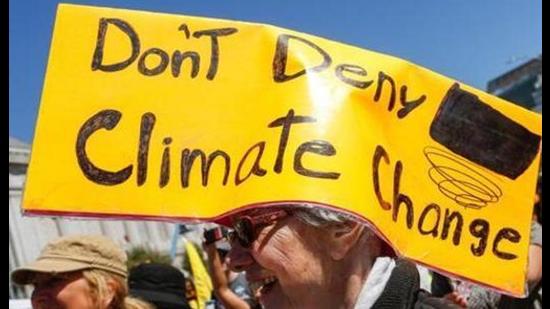How the Northeast can help India cement its climate-leader status
We are priming Meghalaya to turn into a demo farm for testing the ideas of climate- action economy. From a legacy fossil fuel- and deforestation-based economy, we are making an aggressive transition towards regenerative and distributive dynamics and building political consensus in pursuing the green frontier model.
In his address at the G7 summit, Prime Minister Narendra Modi pointed to the need for a concerted global effort in spurring green finance for developing countries to address the climate emergency and resurrect a post-Covid-19 template of a nature-positive economy. The need for climate action finance to create a new world order is the shared reality of all developing economies — saddled with the ill-timed mandate of addressing development needs while battling the pandemic.

India’s climate diplomacy got a boost with the International Solar Alliance in 2014 and the Coalition for Disaster Resilient Infrastructure in 2019, accompanied by a major push in energy transition. This has made India one of the few countries on track to fulfil its Nationally Determined Commitments (NDCs) under the Paris Agreement.
But its climate goals can be further bolstered by strategically transforming Northeast India into a novel climate action zone — testing the next course of economically rewarding decarbonisation and climate actions and turning it into a favourable location for climate investment and finance.
The number of global investors who are now focused on sustainable development goals and the environment, social and governance compliances and climate-sensitive portfolios is increasing. The total assets under management of investors who are signatories to the UN Principles for Responsible Investing exceed $90 trillion. The marketplace for climate solutions is worth over $1 trillion and climate-investment opportunities are expected to total $23 trillion in emerging markets by 2030.
With a predominantly nature-dependent tribal society and a biodiversity and carbon profile that can manage the climate system, states such as Meghalaya are poised to become the eco-laboratories for the world. They can emerge as a hub for modelling radical green recoveries.
We are priming Meghalaya to turn into a demo farm for testing the ideas of climate- action economy. From a legacy fossil fuel- and deforestation-based economy, we are making an aggressive transition towards regenerative and distributive dynamics and building political consensus in pursuing the green frontier model.
Meghalaya and other Northeastern states can pioneer a new lineage of adaptation strategies since we are among the least carbon-emitting states in India. Meghalaya along with Arunachal Pradesh are also among the biggest carbon sinks in India. The ecosystem services performed by our rainforests and biodiversity are immense and their conservation is key to averting the climate crisis.
However, a recent analysis of 119 years of rainfall measurement across the Northeast has revealed a systematic diminishing trend in summer rainfall in Meghalaya, which carries the unique distinction of being one of the wettest regions on earth. Alarmingly, in sync with global warming standards, this pattern is driven by changes in Indian Ocean temperature and rapid deforestation over the last two decades and has caused a 15 km shift of the world’s wettest place from Cherrapunji to Maysnram in recent decades.
According to a 2017 Indian Institute of Technology-Gandhinagar study, the state’s average temperature rose by 1 degree Celsius between 1981 and 2012. According to the Forest Survey of India’s 2019 report on fire-prone areas across India, Mizoram, Tripura, Assam, Meghalaya and Manipur occupy the top five spots in the “extremely fire-prone” zones.
The decreasing rainfall patterns and risk of wildfires pose a huge threat to rain-fed crop systems and forest-led livelihoods. Couple this with dire socio-economic conditions such as poor per capita income, limited crop insurance and poor participation in rural job schemes. All of this enhances our vulnerability to a systemic shock such as the climate crisis.
That leaves us with no other option but to take refuge in nature-based economic philosophy to ensure security for our citizens. But in this could lie a winning strategy for the nation to cement its status in the fast-emerging global race for climate leadership.
James Sangma is Meghalaya’s minister of forest, environment and power
The views expressed are personal



